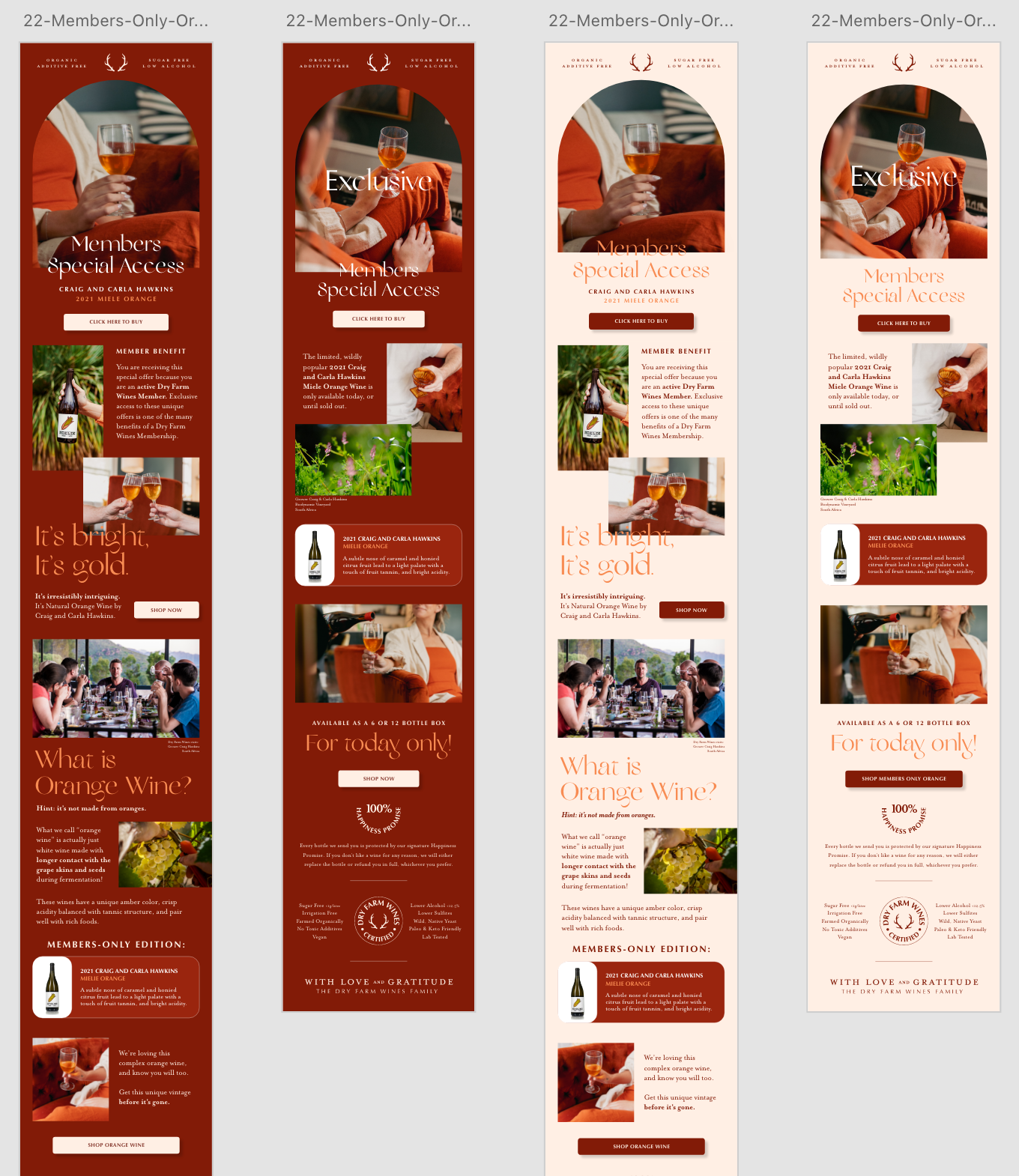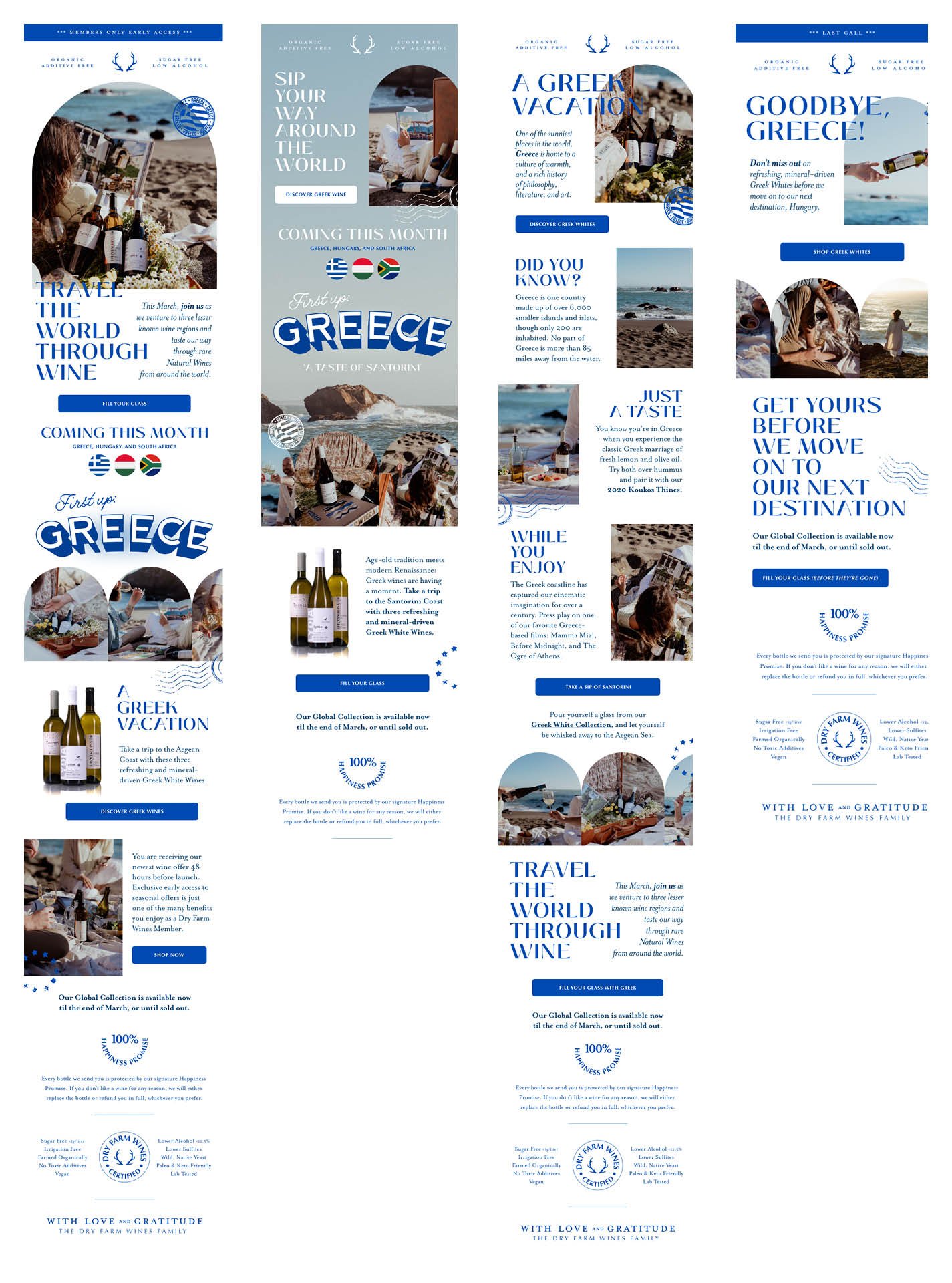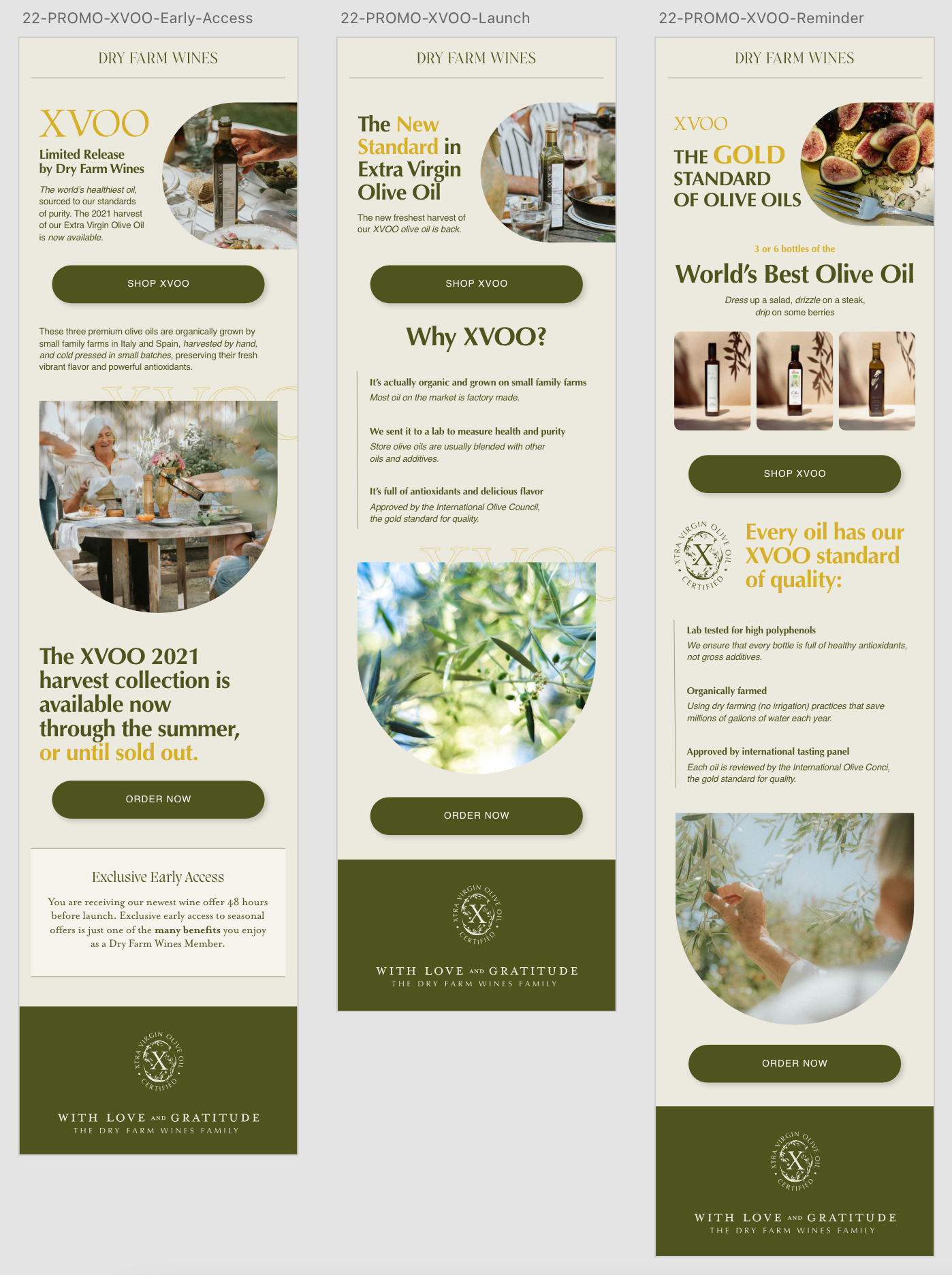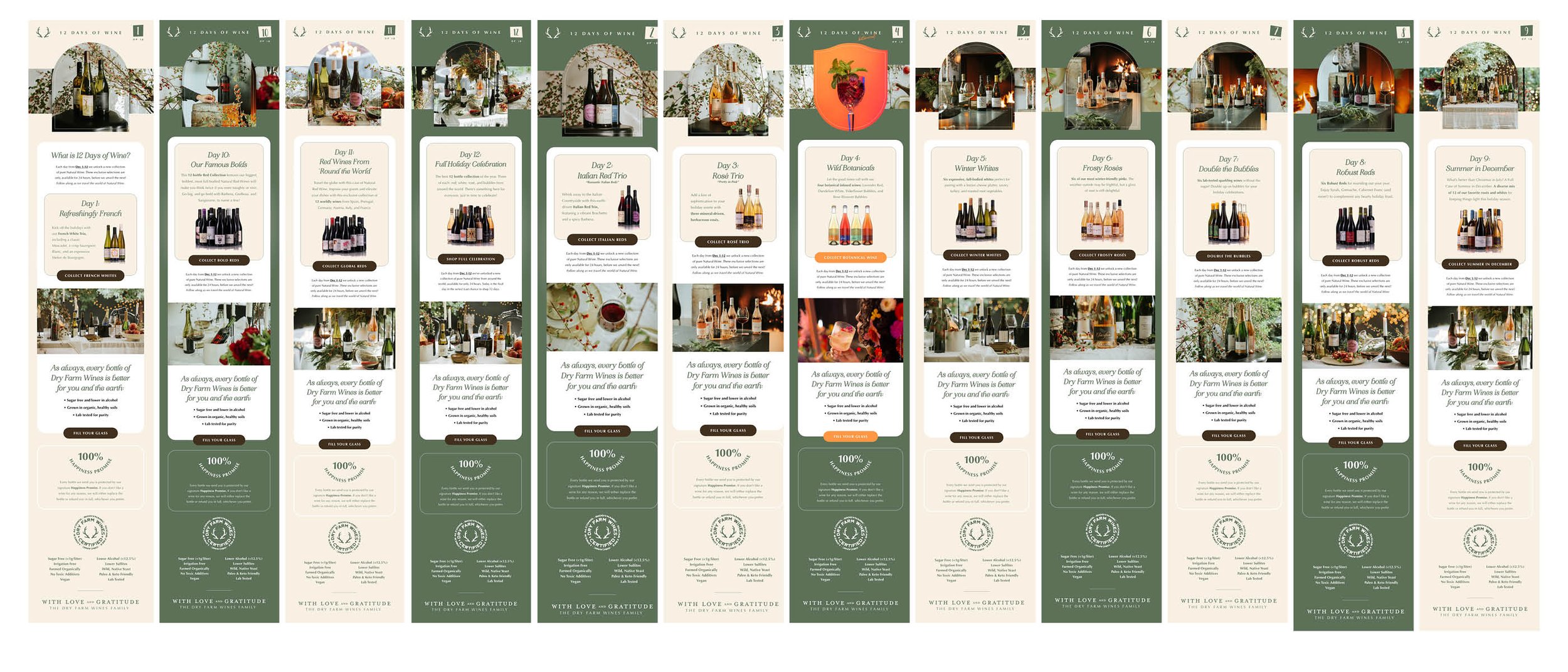
Lifecycle Strategy & Brand Evolution

Lifecycle Strategy & Brand Evolution
This project at Dry Farm Wines—a fast-growing, direct-to-consumer wine company—centered on transforming the business model from reactive, promotion-heavy marketing to a sustainable, lifecycle-driven strategy. By leveraging behavioral insights, campaign data, and customer segmentation, the team overhauled consumer messaging, repositioned the brand, and rebuilt the product strategy around membership growth and long-term customer value.
Email became a powerful engine—not just for revenue, but for surfacing customer preferences, pressure-testing offers, and aligning sourcing and education around what the customer actually wanted.
Consumer Messaging & Product Positioning
Following a full brand audit, we uncovered a deeper issue: the company’s product and sales strategy were fundamentally misaligned with what customers actually wanted. Despite avoiding traditional discounts, the business leaned heavily on urgency messaging and repetitive limited releases—tactics that created fatigue and eroded trust. The data backed it up: engagement was slipping, retention was weak, and long-term value wasn’t being built.
As part of a larger brand transformation, we led a strategic pivot from short-term, sales-led tactics to a lifecycle-driven model focused on retention, relevance, and sustained growth. This included rethinking how and what we communicated—but more importantly, rearchitecting the product strategy itself. We shifted from a static, internal calendar to a market-responsive approach: sourcing and messaging informed directly by real customer behavior and campaign learnings.
The result: a more coherent and durable business strategy, with marketing, product, and operations working in sync to serve the customer—and grow the brand—with intention.
Consumer Messaging Program Example // Comprehensive Campaign Strategy Overhaul
Results:
Replaced short-term sales model with a membership- and retention-focused strategy
Increased email engagement rates by 160% through lifecycle-based segmentation and targeting
Created clear audience segments tied to behavior, journey stage, and CLTV
Improved conversion rates by matching offers to customer lifecycle
Informed buying and product strategy with real-time campaign and segmentation data
Reduced over- and under-sourcing during major supply chain volatility
Decreased product return rates through more accurate, insight-driven sourcing
Developed modular creative and messaging systems to streamline execution by segment
Built analytics dashboard and reporting infrastructure to surface learnings and guide strategy
Key initiatives:
Led development and rollout of a segmented lifecycle marketing strategy
Designed and implemented a full-funnel AB & user testing program
Conducted deep user research and marketing performance analysis to inform strategy
Created a unified content strategy aligned with lifecycle stage and brand positioning
Rebuilt the promotional calendar to support retention and membership growth
Developed modular creative and messaging systems to streamline execution
Partnered with the buying team to build a market-responsive sourcing model
Advised leadership on aligning product strategy with customer behavior









